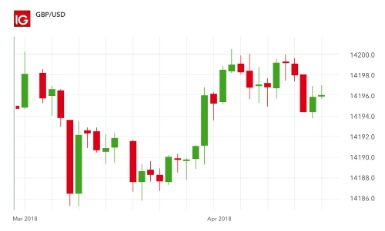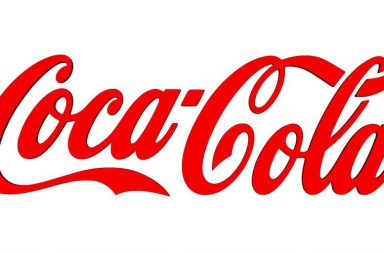
It indicates the reversal of an uptrend, and is particularly strong when the third candlestick erases the gains of the first candle. It indicates that there was a significant sell-off during the day, but that buyers were able to push the price up again. The large sell-off is often seen as an indication that the bulls are losing control of the market. The hanging man is the bearish equivalent of a hammer; it has the same shape but forms at the end of an uptrend.

Although these two formations are talked about as separate entities, they are essentially the same phenomenon. Spinning tops are quite similar to doji, but their bodies are larger, where the open and close are relatively close. A candle’s body generally can represent up to 5% of the size of the entire candle’s range to be classified as a doji. Doji and spinning tops show that buying and selling pressures are essentially equal, but there are differences between the two and how technical analysts read them.
Gravestone Doji: Definition, How to Trade It, and Example
They often employ charts and other tools to identify opportunities in the market. For example, an inverted hammer close above resistance levels could indicate a potential resurgence in a downward trend. These candlesticks are usually formed, if a given tradable instrument has virtually equal opening and closing prices. This causes the doji to have a much shorter body in comparison with the ordinary candlesticks.
This enables traders to catch and ride a particular trend just when it begins, or exit a trend before it reaches its end. Patterns based on doji candlesticks provide reliable signals within trending markets. A reversal pattern that can be bearish or bullish, depending upon whether it appears at the end of an uptrend (bearish engulfing pattern) or a downtrend (bullish engulfing pattern).
Bullish vs. Bearish Candles
One of the most important candlestick formations is called the doji. Candlestick traders will typically look to enter long positions or exit short positions during or after the confirmation candle. For those taking new long positions, a stop loss can be placed below the low of the hammer’s shadow. An inverted hammer is also a bullish signal and looks like an upside down hammer with the shadow pointin upwards. Since the inverted hammer forms at the bottom of a downtrend, it represents a reversal. Knowing other indicators, like the basics of technical analysis, is important, so use this with these candlesticks.
Using Bullish Candlestick Patterns to Buy Stocks – Investopedia
Using Bullish Candlestick Patterns to Buy Stocks.
Posted: Sat, 25 Mar 2017 12:43:45 GMT [source]
These are stocks that we post daily in our Discord for our community members. This confirmed the bullish reversal and continued for about 10days, which could have made for a good swing trade. It is important inverted hammer doji to note that the Inverted pattern is a warning of potential price change, not a signal, by itself, to buy. The chart for Pacific DataVision, Inc. (PDVW) shows the Three White Soldiers pattern.
Engulfing Candlestick Patterns
Candlestick patterns are a great way to spot changes in investor sentiment and possible reversal points in the price of an asset. However, the inverted hammer candlestick chart pattern can be easily confused with other candlestick patterns such as the harami or the hanging man. Other indicators such as a trendline break or confirmation candle should be used to generate a potential buy signal. After a long downtrend, the formation of an Inverted Hammer is bullish because prices hesitated to move downward during the day. Past performance is not necessarily an indication inverted hammer candlestick of future performance. Recently, we’ve seen the Inverted Hammer pattern in Ares Commercial Real Estate Corporation , Cleveland BioLabs , and ChemoCentryx .

The harami pattern is another signal in the market that is used in conjunction with the doji to identify a bullish or bearish turn away from indecision. Every candlestick pattern has four sets of data that help to define its shape. Based on this shape, analysts are able to make assumptions about price behavior. The filled or hollow bar created by the candlestick pattern is called the body. A stock that closes higher than its opening will have a hollow candlestick. If the stock closes lower, the body will have a filled candlestick.
Using a Doji to Predict a Price Reversal
Trading stocks, options, futures and forex involves speculation, and the risk of loss can be substantial. Clients must consider all relevant risk factors, including their own personal financial situation, before trading. Trading foreign exchange on margin carries a high level of risk, as well as its own unique risk factors. The hammer candlestick pattern is formed of a short body with a long lower wick, and is found at the bottom of a downward trend.
The shadow of an inverted hammer can be long or short; if it is longer than its body, then there was greater buying pressure at that low price compared to selling pressure. Inverted hammer candlestick patterns occur when the open and close prices of securities are almost identical, but they are considerably lower than the middle price of the day. This pattern is quite rare compared to the other candlestick patterns as it represents indecision among traders whether the market will go up or down. Inverted hammer candlestick patterns are bearish reversal patterns that indicate selling pressure. A gravestone doji candle is a pattern that technical stock traders use as a signal that a stock price may soon undergo a bearish reversal. This pattern forms when the open, low, and closing prices of an asset are close to each other and have a long upper shadow.
Evening Star
We teach day trading stocks, options or futures, as well as swing trading. To some traders, this confirmation candle, plus the fact that the downward trendline resistance was broken, gave them a potential signal to go long. They have their origins in the centuries-old Japanese rice trade and have made their way into modern-day stock price charting. The color of the candlesticks body is not that relevant, but a green Inverted Hammer is preferred by traders.
- The upper wick originates and gets extended from the body’s centre.
- It indicates the reversal of an uptrend, and is particularly strong when the third candlestick erases the gains of the first candle.
- A stop-loss can be put below the bottom of the hammer’s shadow for individuals entering fresh long positions.
- Lastly, consult your trading plan before acting on the inverted hammer.
Keep in mind that this pattern isn’t one that occurs very frequently. As with stocks and other securities, the formation of a doji candlestick pattern can signal investor indecision about a cryptocurrency asset. In isolation, a doji candlestick is a neutral indicator that provides little information. Moreover, a doji is not a common occurrence; therefore, it is not a reliable tool for spotting things like price reversals. There is no assurance that the price will continue in the expected direction following the confirmation candle.
Morning Doji Star
It is important to note that the Inverted pattern is a warning of potential price change, not a signal, in and of itself, to buy. The long-legged doji is a type of candlestick pattern that signals to traders a point of indecision about the future direction of a security’s price. https://g-markets.net/ This doji has long upper and lower shadows and roughly the same opening and closing prices. In addition to signaling indecision, the long-legged doji can also indicate the beginning of a consolidation period where price action may soon break out to form a new trend.

Recent Comments